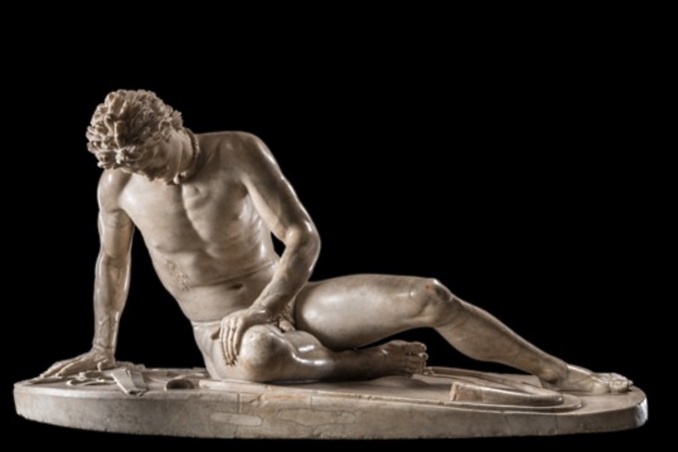
I was touched as I have seldom been by a work of Art. The face looking down at me was not at all the ‘noble countenance’ one reads about but, on the contrary, a face so ordinary that its wearer would not have stood out if he had walked our own streets: unkempt hair, low forehead, slightly snub nose and a Celtic moustache of the type that has for some time been back in fashion. The mouth is half open and the features are frozen in an expression less of pain than of painful bewilderment.
- Gerhard Herm from his work “The Celts”, on his viewing the Dying Gaul at the Roma Capitale
The consensus on the origins of the “Dying Gaul” is that it is a marble copy of an original bronze sculpture commissioned by the King of Pergamum to mark the defeat of Celtic Galatia. The Greek bonzes are thought to have possibly been brought to Rome in the reign of Nero where a marble copy was made and it is this copy that was unearthed in the 1620’s during an excavation at the Villa Ludovisi. By 1736 it was on permanent exhibition at Rome’s Capitoline Museum where it has remained except between 1797 and 1816 when it was at the Louvre after Napoleon stole it and took it to Paris.